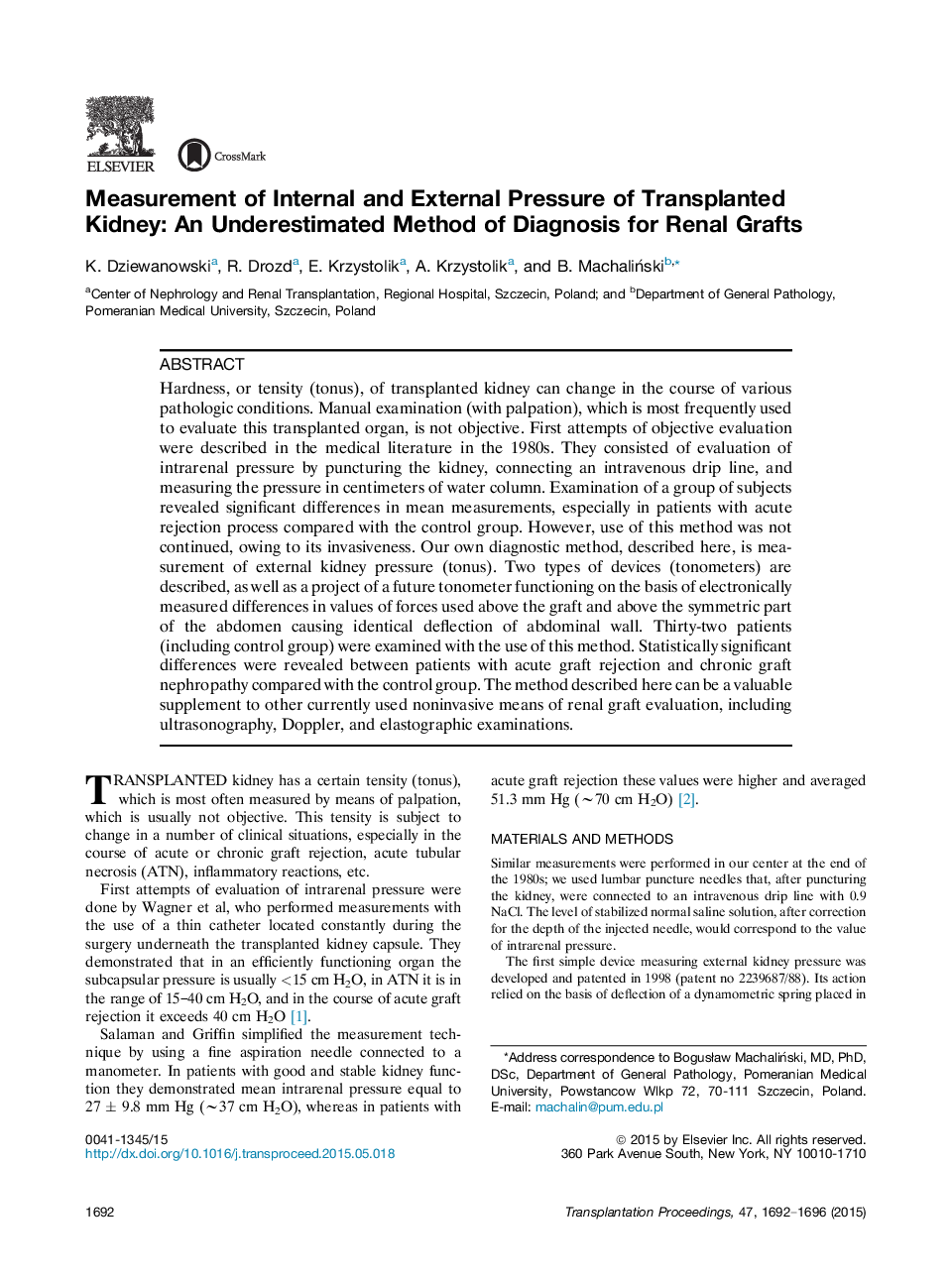| Article ID | Journal | Published Year | Pages | File Type |
|---|---|---|---|---|
| 6247138 | Transplantation Proceedings | 2015 | 5 Pages |
â¢Extrarenal pressure evaluation via measurement of differences in the magnitude of force used (kG) above the kidney and on the contralateral symmetric side of the abdomen can be a useful complement to currently used noninvasive methods in evaluation of the transplanted kidney.â¢The described method can have a significant value in differentiating between acute rejection and kidney dysfunction caused by acute tubular necrosis in the early post-transplantation period.â¢Because chronic nephropathy leads to a significant drop of intrarenal pressure in the transplanted graft, confirming this with tonometric examination can support the correct diagnosis.
Hardness, or tensity (tonus), of transplanted kidney can change in the course of various pathologic conditions. Manual examination (with palpation), which is most frequently used to evaluate this transplanted organ, is not objective. First attempts of objective evaluation were described in the medical literature in the 1980s. They consisted of evaluation of intrarenal pressure by puncturing the kidney, connecting an intravenous drip line, and measuring the pressure in centimeters of water column. Examination of a group of subjects revealed significant differences in mean measurements, especially in patients with acute rejection process compared with the control group. However, use of this method was not continued, owing to its invasiveness. Our own diagnostic method, described here, is measurement of external kidney pressure (tonus). Two types of devices (tonometers) are described, as well as a project of a future tonometer functioning on the basis of electronically measured differences in values of forces used above the graft and above the symmetric part of the abdomen causing identical deflection of abdominal wall. Thirty-two patients (including control group) were examined with the use of this method. Statistically significant differences were revealed between patients with acute graft rejection and chronic graft nephropathy compared with the control group. The method described here can be a valuable supplement to other currently used noninvasive means of renal graft evaluation, including ultrasonography, Doppler, and elastographic examinations.
